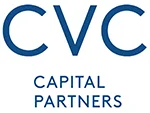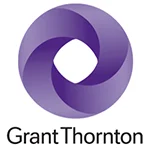 |
| Steve Halsey |
Bank directors, CEOs and senior managers who believe the strong focus on corporate Environmental, Social, and Governance policies and actions will fade as the COVID-19 pandemic eases may be risking the future of their enterprises and their own careers. If they believe a little ESG marketing razzle-dazzle can give them cover to conduct business as usual, they should think again.
For years, titans of the oil and gas industry have eloquently addressed environmental concerns backed by token investments in alternative energy and vague promises to reduce their carbon footprints. This amounted to marketing lip service and window dressing while essentially conducting “business as usual.”
Last May, three global oil and gas giants were shaken from this false reverie. Chevron shareholders voted 61 percent in favor of a proposal directing the company to reduce its total greenhouse gas emissions substantially, and a Dutch court ordered Royal Dutch Shell to cut its carbon emissions by 45 percent by 2030 compared to 2019 levels.
Simultaneously, a shareholder revolt led by a small hedge fund voted three independent directors with extensive environmental expertise to the Board of ExxonMobil. Among those voting for the new directors: the three largest U.S. pension funds, the two biggest advisory services, at least one of the three largest fund managers: BlackRock. Why? Because they understand that climate risk is also a serious investment risk. They also know that broad-market high-ESG indexes are significantly outperforming low-ESG counterparts, according to MSCI and many others.
| This article is featured in O'Dwyer's Aug. '21 Financial PR/IR & Professional Services PR Magazine (view PDF version) |
Everyone on Wall Street knows it, too, which is why a global survey of institutional investors released by MSCI in February showed that 77 percent of investors increased ESG investments “significantly” or “moderately” in response to COVID-19. This figure increases to 90 percent for the largest institutions with over $200 billion of assets.
Revisiting the four Ps
Corporate commitment to ESG can’t be feigned or taken lightly; there are too many eyes watching, reporting, rating or regulating every move. Poor environmental risk scores by global rating organizations—such as MSCI, ISS and Sustainalytics—are quickly noticed by regulators, customers, investors, business partners and the media. Poor social value practices are easily noticed by unhappy employees, customers and communities.
ESG and Diversity, Equity and Inclusion values must be baked into corporate culture and nurtured from the top-down and bottom-up. It requires revisiting the traditional “four Ps” of marketing—Product, Packaging, Promotion and Place (distribution). The four closely connected Ps that count most with ESG and DE&I marketing are: Purpose, product, policy and people.
Company purpose
Earlier this year, G&S asked a cross-section of U.S. adults aged 18 and older for their thoughts on company purpose. These findings demonstrate 42 percent of Americans want to hear from corporate leaders about company mission and purpose, and would be more likely to purchase products or services from a given company if it had a stated purpose and carried that purpose out in its policies and practices.
The rising importance of corporate purpose beyond profits started before the pandemic, but COVID-19 magnified its importance. According to the Page Society’s groundbreaking research in The CCO as Pacesetter: What It Means, Why It Matters, How to Get There, companies need to move beyond simply defining a corporate purpose to weaving it into the very fabric of the business.
Purpose is no longer just “nice to have.” It’s a business-critical imperative. Senior banking executives must define, live, infuse and connect purpose to their daily actions. It starts by answering two essential questions: What is our reason for being? And what would the world lose if our company no longer existed?
Product and policy
Closely tied to purpose, product and policy in terms of ESG marketing starts with the company itself: What’s the bank’s purpose? What’s the bank’s reputation? Has the bank committed to achieving net-zero emissions? Does the bank have a policy for building a portfolio of high-value “green” loans and investments that reduce climate risk? Does the bank have a policy for integrating ESG risks into its overall business strategy? Does the bank have a policy for reducing discriminatory lending to help disadvantaged people and communities build social equity and wealth?
One ESG opportunity that some banks started implementing during the pandemic is the reduction of restrictive barriers to help dismantle systemic bias and build trust. Too many Americans today are unbanked or underbanked. Many factors have made access to financial products and services challenging for segments of the U.S. population: traditional banking account balance requirements and fees; restrictive and sometimes punitive credit policies; implicit bias in assumptions regarding various consumer demographics; and financial industry culture itself relative to who feels comfortable navigating it.
These dynamics can create a negative impact on the financial stability and social mobility of large segments of the population. They also represent a significant opportunity to broaden customer bases while contributing to a stronger, more equitable economy and society.
One enormous opportunity for banks and credit card companies is consumers in their 20s and 30s. The convenience of Venmo and ApplePay are one reason young people have avoided credit cards. Promoting the reduction of restrictive barriers or elimination of “gotcha fees” among Millennials and Gen Z are examples of how banks can broaden their customer base while helping fledgling financial consumers become responsible, economically stable citizens. This shift is particularly critical as more workers shift from traditional full-time employment to less codified roles in the “gig economy.”
Is there risk involved? Certainly, but there are more than 72 million Millennials in the United States today, and most of them need to establish stronger credit ratings. Considering that most of them are just starting to build their personal wealth, can any bank risk ignoring their needs?
People
Does your workforce reflect the ethnic and racial population of your community or region? What about senior management and the Board? While many banks in the U.S. have created “Diversity & Inclusion” committees to advise senior management, too many banks still have Boards and senior management teams dominated by white men, with a few token women and minorities. Intelligent change takes time, of course, but there’s no time to waste.
BlackRock CEO Larry Fink said it eloquently in his January letter to CEOs: “A company that does not seek to benefit from the full spectrum of human talent is weaker for it—less likely to hire the best talent, less likely to reflect the needs of its customers and the communities where it operates, and less likely to outperform.”
The business case for a diverse, inclusive company is compelling. Research by McKinsey shows that the most ethnically diverse companies are 35 percent more likely to outperform the least ethnically diverse companies. Inclusive companies have a 2.3x higher cash flow per employee over a three-year period. According to Deloitte, inclusive teams outperform their peers by 80 percent in team-based assessments. Firms in the top tier for DE&I are 1.8 times more likely to be change-ready and 1.7 times more likely to be innovation leaders. According to research from Glassdoor, 67 percent of job seekers said that a diverse workforce is an important factor to them when considering companies and job offers and that 57 percent of employees want their company to increase diversity.
2020 was an inflection point for ESG
Previous economic crises have tended to reduce corporate emphasis on sustainability and social initiatives in order to focus on financial recovery and survival, but that did not happen in 2020. COVID-19 is a uniquely people-centered crisis compounded by uneven economic impacts and a surge in social justice efforts to address racism and other systemic societal issues.
Corporate leadership is experiencing intensified interest in their ESG policies and actions by all stakeholders: employees, local communities, investors, government and the general public. Considering the overwhelming evidence that companies with high ESG ratings consistently and substantially outperform their peers across all industries, including banking, it’s a safe bet that smart ESG practices will remain important long after the pandemic has ended.
***
Steve Halsey is Chief Growth Officer at G&S.


 Teneo is handling the initial public offering of CVC Capital Partners, one of Europe’s largest private equity firms with nearly $200B in assets under management.
Teneo is handling the initial public offering of CVC Capital Partners, one of Europe’s largest private equity firms with nearly $200B in assets under management. Brunswick Group represents Endeavor Group Holdings as it agrees to go private via its acquisition by Silver Lake technology investment firm, which is handled by Edelman Smithfield.
Brunswick Group represents Endeavor Group Holdings as it agrees to go private via its acquisition by Silver Lake technology investment firm, which is handled by Edelman Smithfield. Tod Donhauser, a nine-year veteran of Edelman, has joined H/Advisors Abernathy as managing director and head of its San Francisco office.
Tod Donhauser, a nine-year veteran of Edelman, has joined H/Advisors Abernathy as managing director and head of its San Francisco office. Intelligent Group Ltd, a Hong Kong-based financial PR firm, has priced its initial public offering of 1.9M shares at $4, which is the low end of the $4 to $5 range.
Intelligent Group Ltd, a Hong Kong-based financial PR firm, has priced its initial public offering of 1.9M shares at $4, which is the low end of the $4 to $5 range. Kekst CNC represents Grant Thornton as it sells a majority stake in its US arm to New Mountain Capital, which relies on Goldin Solutions, in what is billed as the largest PE investment in the accounting and advisory sector.
Kekst CNC represents Grant Thornton as it sells a majority stake in its US arm to New Mountain Capital, which relies on Goldin Solutions, in what is billed as the largest PE investment in the accounting and advisory sector.


 Have a comment? Send it to
Have a comment? Send it to 
No comments have been submitted for this story yet.